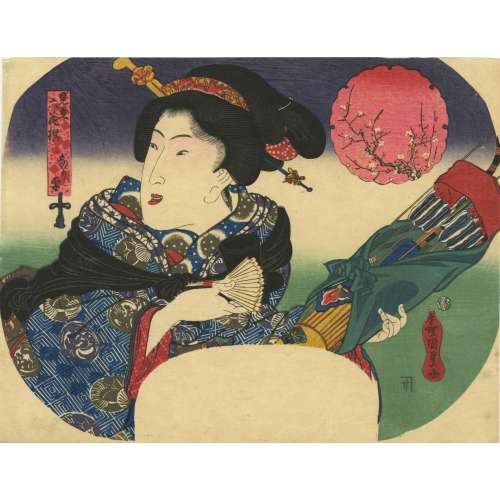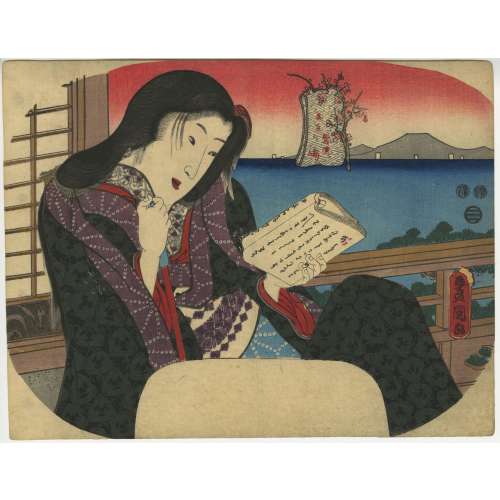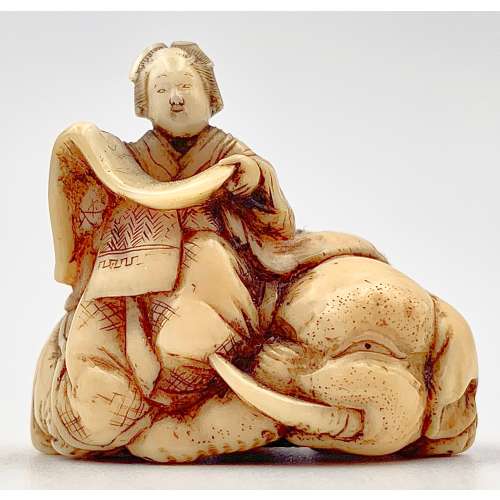Artist:
Utagawa Kunisada [歌川 国貞] a.k.a. Utagawa Toyokuni III [三代歌川豊国] (Japanese, 1786 – 1865).
Signed:
Kōchō(rō) Kunisada ga (香蝶国貞画) in a red double-gourd cartouche.
Publisher: Surugaya Sakujirō [駿河屋作次郎] (Japanese, fl. c. 1844 – 1865); Marks 06-005 | 501a.
Single nanushi censor seal: Muramatsu (1843-6). The date is attributed to c. 1844.
Title: Narihira [なり平].
Ariwara no Narihira [在原 業平] (Japanese, 825 – 880) – one of the Six Immortal Poets –
The Rokkasen [六歌仙].
Series: A parody of six immortal poets [見立六花撰] (
Mitate Rokkasen).
Media: Untrimmed fan print (uchiwa-e), 227 x 293 mm, depicting a beautiful woman with a bow and arrows in her left hand.
Series: Mitate Rokkasen [見立六花撰] – is sometimes interpreted as "A parody of six immortal poets" or "A comparison of six select flowers". [
LIB-1212.2017] Robert Schaap. Kunisada: Imaging, drama and beauty. — Leiden: Hotei Publishing, 2016; pl. 28, p. 58. This is another fan print with another immortal poet, Bun'ya no Yasuhide [
文屋 康秀] (Japanese, -d. 885?), from the same series, provided in the book:

Robert Schaap, 2016.
With special thanks to Horst Graebner for help with the description and date attribution: "The print can be dated to 1844: censor seal is Muramatsu (Muramatsu Genroku); he acted in 7/1844 and 4/1845 (and also later) as censor but Kunisada changed his name to Kunisada early in 1844."




